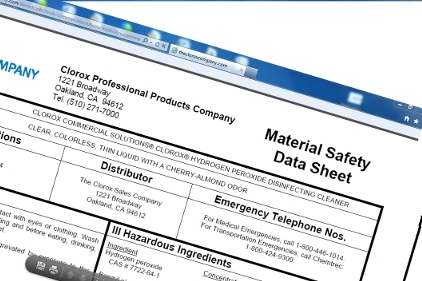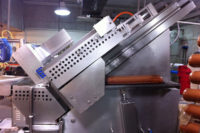Can worker safety be pre-programmed? Not yet, at least. Once a basic preventive-maintenance program is in place, tools such as software programs can certainly be used to increase its effectiveness and efficiency, but the onus still rests with management.
Preventive-maintenance software first provides a structured means of ensuring machines are in good operating condition, otherwise they could break down and hurt employees.
“Generally, better maintenance means there are less hazards, safety processes are in place and better guards are being used,” says David W.I. Griffiths, director, CWorks Systems Inc. (North America), based in Buffalo, N.Y.
More diagnostic tools can be built into machines, so potential problems are easier to notice. Noise and vibration analysis, for example, can identify internal engine problems before they irrevocably fail.
“Infrared scanning can point out potential hot spots for electrical systems,” notes Griffiths. “Also, velocity profiles show how the system is supposed to operate, and identify changes to base profiles,” so malfunctioning parts can be fixed or replaced.
Software programs can also provide immediate information on where possible dangers are, such as with hazardous materials like solvents and chemicals.
“Employees on the front lines then have the most current information,” says Griffiths, “and can be assured that operations are running smoothly.”
Workers can access information in a user-friendly manner with their handheld devices.
“Obviously, with more information, it’s easier to identify trends and predict when operations can go wrong — and help improve problem areas,” says Griffiths.
Filling in the blanks
The cost of software programs can be a barrier for smaller companies, but less expensive programs are available — just with fewer built-in features.
“What you put into the software is what you get out of it, in our case,” says Fred Konchan, plant manager, Cher-Make Sausage Co., Manitowoc, Wis. “So my perspective is that worker safety comes from the leadership of the company.”
He notes that his company’s software was basically a blank database for the safety, maintenance and accounting teams to fill in, which actually makes it more useful because it’s not pre-programmed with vague instructions but, rather, specific information for his company’s equipment and preventive maintenance — that can also be continuously updated.
“However, if we don’t put in where and how to initiate lockouts, for example, then there aren’t instructions to lockout the machines, so someone could possibly work on an energized system,” he says. “Therefore, we provide a lot of training and education to employees.”
Scheduling down time
In general, most of the training that takes place in food plants is related to worker safety, notes Richard Stier, consulting food scientist, Stratecon International Consultants, Sonoma, Calif. Over the course of a year, employers usually provide refresher training on proper lifting, slips and falls, chemical handling, lockout/tagout procedures, and the proper use of personal protective equipment.
“One conflict in the industry is that equipment should be accessible for cleaning and maintenance, but has to remain safe,” says Stier. “Belts and moving parts can grab people, so they must be covered — which means workers must remove covers or access panels to properly clean lines.”
Repetitive motion injuries such as carpal tunnel syndrome are a concern in the food-processing industry. Many companies design programs to minimize such injuries with their workforce. Lines will be stopped periodically to allow workers to stretch or exercise. This has been shown to not only reduce injuries and lost worker hours, but can improve morale.
“A company’s preventive-maintenance programs can be utilized to track maintenance costs, emergency repairs and the cost of replacement parts,” says Stier. “Designing programs to make the workplace more comfortable and safer is a logical extension for improved operational efficiencies.”
Back to basics
In the end, preventive-maintenance programs still rely on the basics: a strong management commitment to preventive maintenance and reduction of problems that can cause injuries to employees, says John G. Surak, Ph.D., Surak and Associates, Clemson, S.C.
“In addition, there needs to be a commitment to strong root cause problem-solving when issues arise,” he says. “The root cause problem-solving process needs to identify the cause of the problem, so effective corrective actions can be taken to reduce or eliminate the issue.”
And none of these initial requirements require any software or new equipment.







Report Abusive Comment